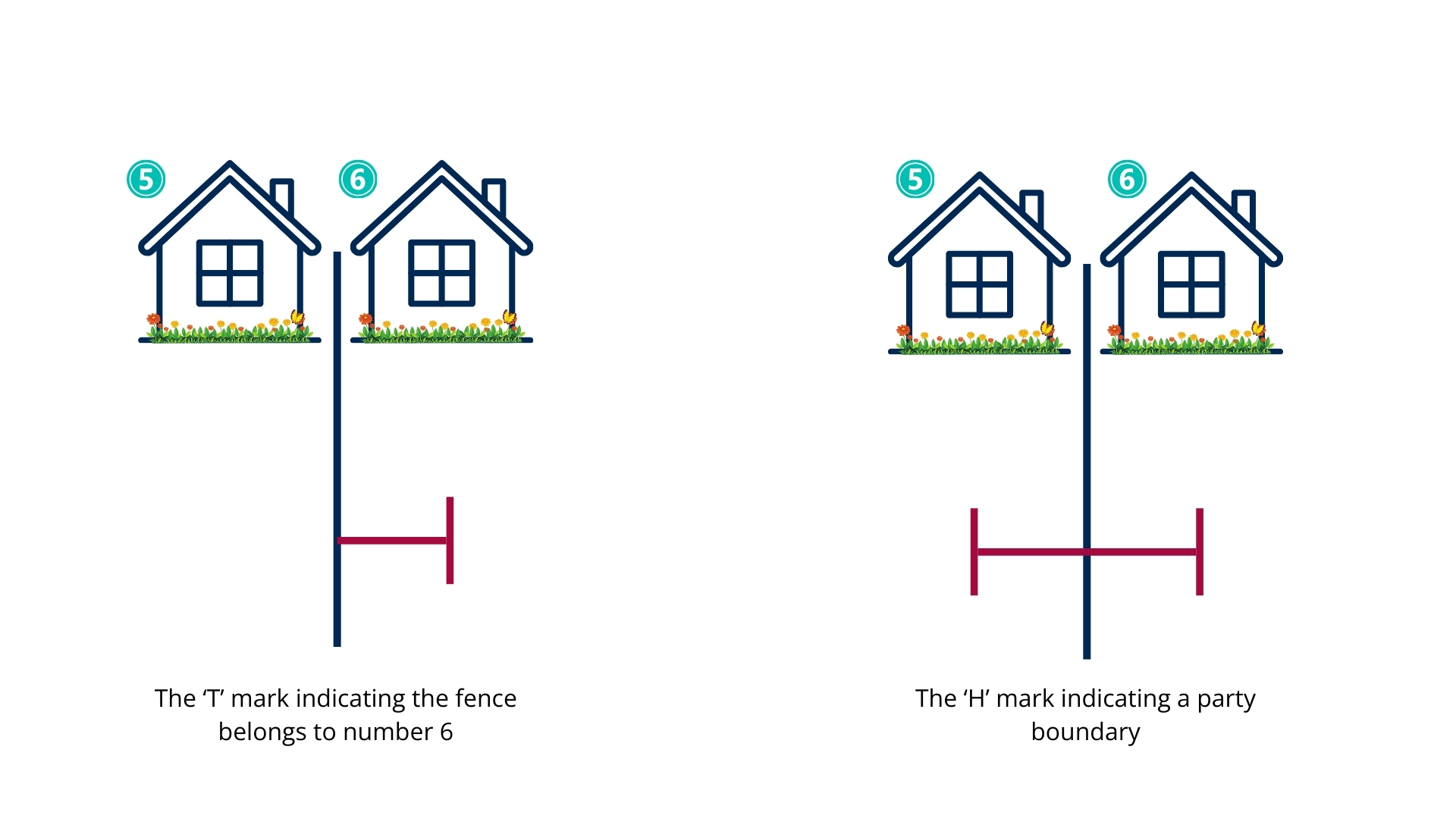The question of "who owns the fence" is common among homeowners. In fact, almost 1,000 people search Google each month for an answer, usually regarding a fence dispute with their neighbour.
As a homeowner, it's important to understand fence ownership and other garden laws so you know your rights and responsibilities and avoid potential conflicts with your neighbours.
In this brief article, we outline the basics of fence ownership in England and Wales and debunk the most common misconceptions about boundary laws and boundary lines when dealing with residential properties.
Determining fence ownership
The first port of call to establish who owns a fence is to check the deeds for your property. The "deeds" are the legal documents you were given when you purchased your property either from a developer or the previous owner. The deeds often include details on the boundaries and who owns and is responsible for the fences. Nowadays a homeowner may have no physical deeds, as all records may be at HM Land Registry.
There are a few other ways of helping to determine fence ownership:
Title deeds
If you cannot locate your property deeds, your property register and title plan, the title deeds are available from HM Land Registry. It's currently £3 to download a copy of the register via their website. The title register may state which boundaries you own and are responsible for and also record any restrictive covenants and easements.
T Marks
Some property plans have 'T' marks along the boundary line to indicate boundary ownership. (will include an image). Typically, the stem of the 'T' points towards the property responsible for the fence.

Fence orientation
Although not recognised as a way to determine who legally owns a fence, the "good side" of a fence is often in the garden of the fence owner - this is the side without the rails. However, it's important to note that the previous owner of a home may have had an agreement with an old neighbour about the good side of the fence.
Conveyancing documents
When you purchased your property, the legal conveyancing documents may have included information about boundary responsibilities.
The myth of the left or right-hand rule
There are many misconceptions about residential property law, but one of the most common we hear is fence ownership and responsibility. The misconception is that a property owner is responsible for the left-hand fence as they look at their property from the street, or we have also heard from many people who think it's the right-hand fence. Neither is correct, and this "rule" should not be relied on to determine fence ownership.
Shared ownership of fences
It's less common, but sometimes you may have a shared fence with your neighbour. This may be recorded on your title register, or this may have become the case based on a course of conduct or agreement between the previous property owners. If this is the case, your title deeds may show a 'H' mark rather than a 'T' mark. This is known as a party fence, which means both neighbours are responsible for its maintenance and repair. This can cause an issue when one neighbour wants to make changes or repair the fence, and the other is unwilling to contribute to the costs.
No clear owner
If, after looking at the legal documents, there is no clear owner of the fence, then the fence can be considered a boundary feature and, as such, has no legal owner, which means either neighbour has the right to fix, repair or maintain the fence but has no legal obligation to do so.
Replacing or altering a fence
One of the many causes of a dispute is when a fence needs to be replaced or repaired.
Before you make any changes to a fence, it's important to think about:
- The legal owner of the fence is to ensure you have the right to make any alterations. This includes painting "your side" of the fence or using the fence to grow plants or hang garden lights.
- Talking to your neighbour. Even if you own the fence, it is polite to communicate with your neighbours about any plans you have to change the fence or boundary. This can help to avoid any issues in the future.
- Your legal responsibilities for alterations, for example, in some instances where the height of a fence is in question, you may need planning permission, or if you think you have a party fence, you may need to follow the Party Wall Act 1996.
Resolving fence disputes
Hopefully, you'll always agree with your neighbour over a fence or other boundary. However, we know that won't always be the case, so we recommend these initial steps to resolve any issue amicably and remain on neighbourly terms.
- Keep things civil. Most fence disputes can be resolved with a friendly conversation and a compromise - try to be considerate of your neighbour's point of view.
- Legal advice is always an option. However, we always urge clients to try alternative dispute resolution first. Using a boundary dispute specialist lawyer is important if legal advice is needed.
Conclusion
As you've seen, understanding who owns the fence is not as straightforward as people think. We suggest using legal documents to define the boundary, but a conversation with your neighbours can be just as effective.
This information is for guidance purposes only and does not constitute legal advice. We recommend you seek legal advice before acting on any information given.

